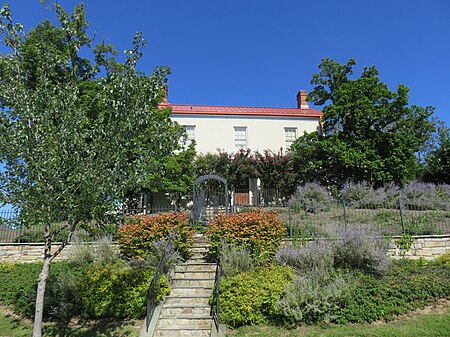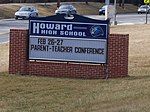Mountjoy Farm

Mount Joy (sometimes called Santa Fe) is a historic slave plantation in Ellicott City, Howard County, Maryland, which has a current address of 5000 Executive Park Drive. The farm is located on the original land grant named Chews Resolution Manor. In 1810, Dr. Arthur Pue owned land around modern Route 100. Pue was the family doctor for the Gorman family, who Senator Arthur Pue Gorman is named after. The Pue family farmed the property with 19 slaves. In 1851, Samuel Wethered Jr. purchased 206 acres of farmland, creating "Santa Fe" from Dr. Pue. In 1912, 193 acres of the property was purchased by the Buck Family. On October 10, 1980, the estate was purchased by K&M Development Corporation (Brantly Development Group Corporation) for $532,000. In 2003, Winchester Homes purchased the site. The main farm building is an L-shaped layout built of brick with a stone foundation, built about 1851. In 2003 the remaining 86 acres of the site was subdivided and outbuilding were demolished for a Winchester Homes Subdivision, leaving the farmhouse remaining. A barn was offered to the Howard County Conservancy to relocate off the historic setting.
Excerpt from the Wikipedia article Mountjoy Farm (License: CC BY-SA 3.0, Authors, Images).Mountjoy Farm
Executive Park Drive,
Geographical coordinates (GPS) Address Nearby Places Show on map
Geographical coordinates (GPS)
| Latitude | Longitude |
|---|---|
| N 39.237638888889 ° | E -76.819166666667 ° |
Address
Montjoy
Executive Park Drive 5000
21043
Maryland, United States
Open on Google Maps




